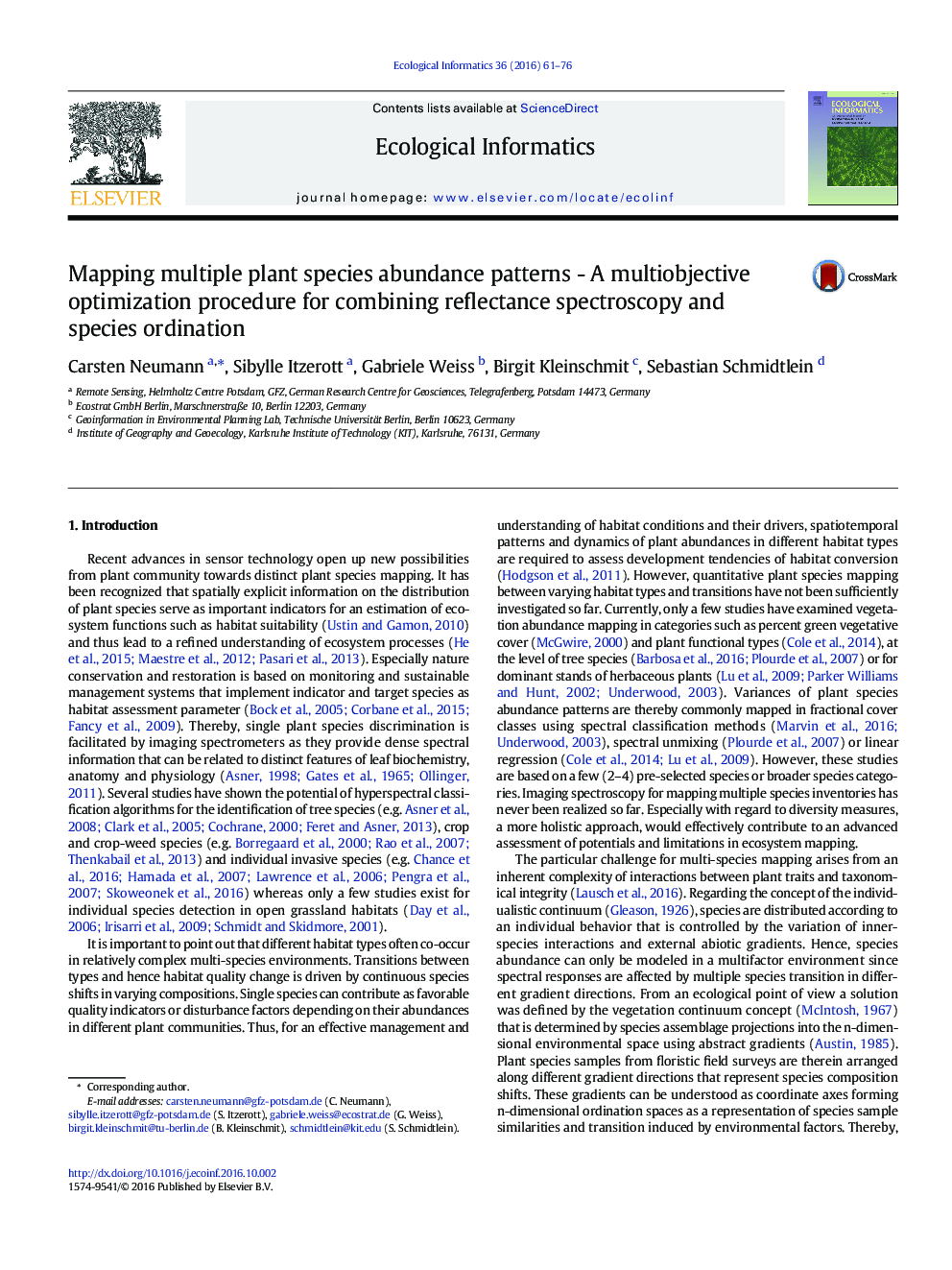| Article ID | Journal | Published Year | Pages | File Type |
|---|---|---|---|---|
| 8845913 | Ecological Informatics | 2016 | 16 Pages |
Abstract
Nature conservation and ecological restoration crucially depends on the knowledge about spatial patterns of plant species that control habitat conversion and disturbance regimes. Especially, species abundances are capable of indicating early development tendencies for setting habitat management strategies. This study demonstrates the transfer of field spectroscopy to hyperspectral imagery to map multiple plant species abundances in an open dryland area using two imaging spectrometers in two different phenological phases. We show that species abundances can partially be described by multiple gradients forming different coordinates in a contour map. For this purpose, species abundances were projected into an ordination space using non-metric multidimensional scaling and subsequent spatial interpolation. It was demonstrated that different gradients can be modeled in a Partial Least Squares regression framework resulting in distinct spectral features for certain gradient directions. We combine both objectives in a multiobjective NSGA-II procedure to maximize the quantitative determination of species abundance in ordination and spectral predictability in related field spectra, simultaneously. NSGA-II was finally used to select optimal spectral models for n = 35 single species that were transferred to hyperspectral imagery for mapping purpose. We can show that abundance predictabilities can be evaluated on the basis of individual model performances that hold different spectral features for each species in a designated phenological phase. Finally, we present spatially explicit multi-species maps for the best n = 18 and abundance maps for n = 8 models that could be linked to patterns of species richness, coexistence, succession stages and habitat type conditions.
Related Topics
Life Sciences
Agricultural and Biological Sciences
Ecology, Evolution, Behavior and Systematics
Authors
Carsten Neumann, Sibylle Itzerott, Gabriele Weiss, Birgit Kleinschmit, Sebastian Schmidtlein,
